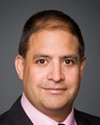The vast majority of it is spent funding the LHOs, for things like electricity, all the utility costs, water and garbage services, the administration and maintenance. All of our LHOs do the maintenance for all the public housing, so it's basic repairs and that sort of thing.
Evidence of meeting #39 for Indigenous and Northern Affairs in the 40th Parliament, 2nd session. (The original version is on Parliament’s site, as are the minutes.) The winning word was training.



